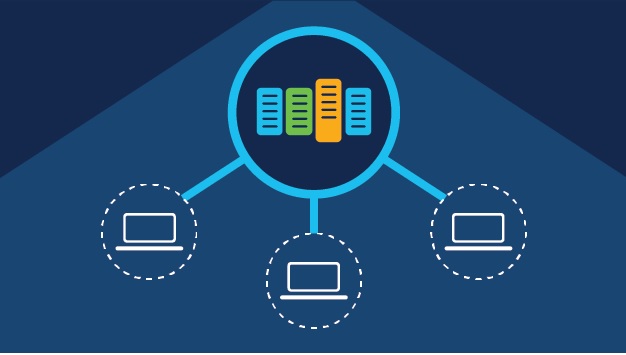Virtual desktop infrastructure (VDI) is a technology that allows users to access a virtualized desktop environment from any device, anywhere. This is made possible by running the desktop environment on a virtual machine (VM) that is hosted on a centralized server.
VDI has become increasingly popular in recent years as it allows organizations to provide secure and flexible access to corporate resources for their employees, regardless of their location.
Utilization of Virtual Desktop Infrastructure
VDI can provide users with a consistent desktop experience across different devices. For example, if an organization uses multiple types of devices, such as laptops, tablets, and smartphones, VDI can ensure that users have the same desktop environment and applications on all devices. This can help to improve productivity and reduce the need for users to learn different applications or interface designs on different devices.
VDI Development Models
There are several different types of VDI deployment models, including persistent VDI, non-persistent VDI, and shared VDI.
1. Persistent VDI:
Persistent VDI is when each user has their own dedicated virtual desktop environment. This allows users to customize their desktop environment and save their work and settings. However, it can be more expensive to deploy and maintain compared to other VDI deployment models.
2. Non-persistent VDI:
Non-persistent VDI is when each user is assigned a virtual desktop environment from a pool of pre-configured environments. This can be more cost-effective than persistent VDI as it reduces the need for dedicated hardware resources for each user. However, users are not able to save their work or customize their desktop environment.
3. Shared VDI:
Shared VDI is when multiple users share the same virtual desktop environment. This can be useful for organizations with seasonal or fluctuating user demand, as it allows them to scale their VDI deployment up or down as needed. However, shared VDI can be less secure than other VDI deployment models as multiple users are accessing the same environment.
VDI can be implemented using various virtualization technologies, such as VMware, Hyper-V, and Citrix. Each of these technologies has its own set of features and capabilities, and the best solution for an organization will depend on its specific requirements and needs.
What are the Charming Gains of Virtual Desktop Infrastructure (VDI)?
VDI allows organizations to better manage and maintain their desktop environment. Each device needs to be individually managed and maintained with traditional desktop deployments. This can be time-consuming and costly, especially if an organization has a large number of devices.
With VDI, all desktop environments are hosted on a central server, which can be easily managed and maintained by the IT department.
It allows users to access their desktop environment from any device with an internet connection. This can be especially useful for employees who need to work remotely or who need to access corporate resources from personal devices.
Aside, it also allows organizations to better manage and secure their corporate data, as all data is stored and processed on the central server rather than on the user’s device.
Factors of VDI
Well, here are a few factors of VDI that you may consider. They are mentioned below. So, let’s come to the points:
1. Scalability:
VDI can be easily scaled up or down to meet changing user demand. This can be useful for organizations with seasonal or fluctuating user demand, as it allows them to scale their VDI deployment up or down as needed.
2. Performance:
VDI can sometimes be affected by network latency or other performance issues, especially if users are accessing their virtual desktops from a remote location. However, recent advancements in networking and virtualization technologies have greatly improved the performance of VDI.
3. Cost:
VDI can be more expensive to deploy and maintain compared to traditional desktop deployments, as it requires additional hardware and software resources. However, it can also provide cost savings in the long term, as it allows organizations to better manage and maintain their desktop environment and reduces the need for on-site IT support.
4. Security:
VDI can provide improved security compared to traditional desktop deployments, as all data is stored and processed on the central server rather than on the user’s device. However, it is important to properly configure and secure the central server to prevent unauthorized access to corporate data.
5. Use cases:
VDI can be useful for a variety of use cases, such as remote work, secure access to corporate resources, and providing a consistent desktop experience across different devices. It can also be useful for organizations that need to comply with regulatory requirements, such as HIPAA or PCI DSS, as it allows them to better manage and secure their data.
6. Limitations:
VDI may not be suitable for all organizations or use cases. For example, it may not be suitable for resource-intensive applications or for users who require a high-performance desktop environment. It may also be less cost-effective for organizations with few users.
Bottom Line:
Overall, VDI is a useful technology for providing secure and flexible access to corporate resources for employees, regardless of their location or device. It allows organizations to better manage and maintain their desktop environment and can improve productivity by providing a consistent desktop experience across different devices. However, it is important to carefully consider the different deployment models and virtualization technologies available to find the best solution for your organization.



